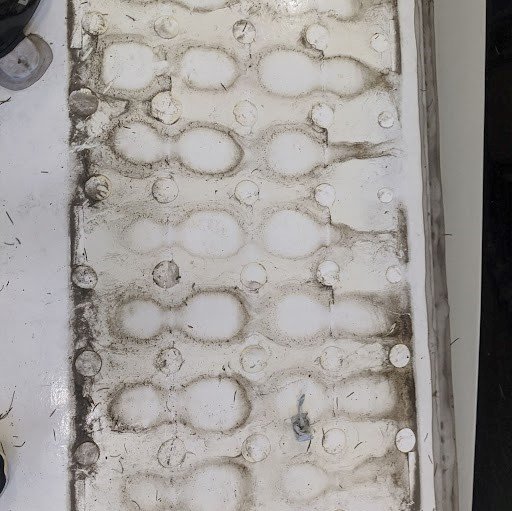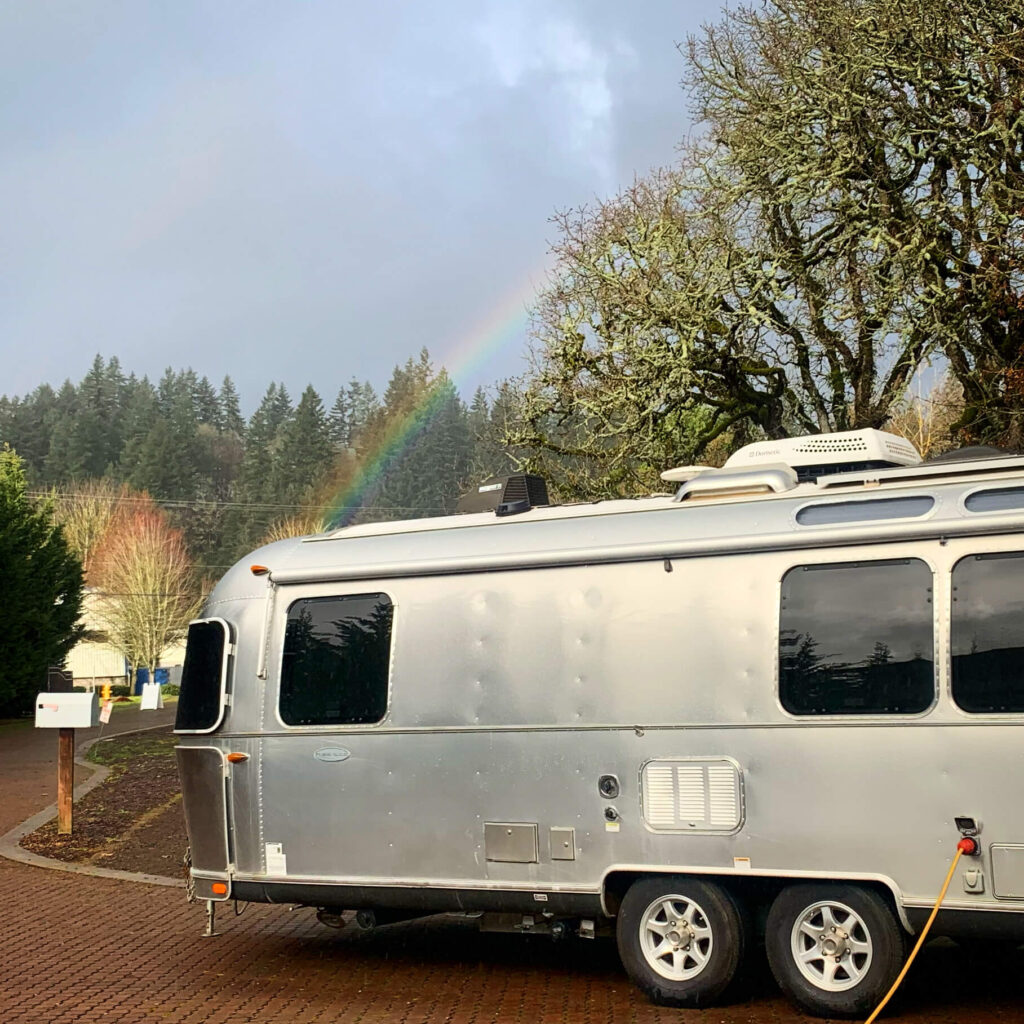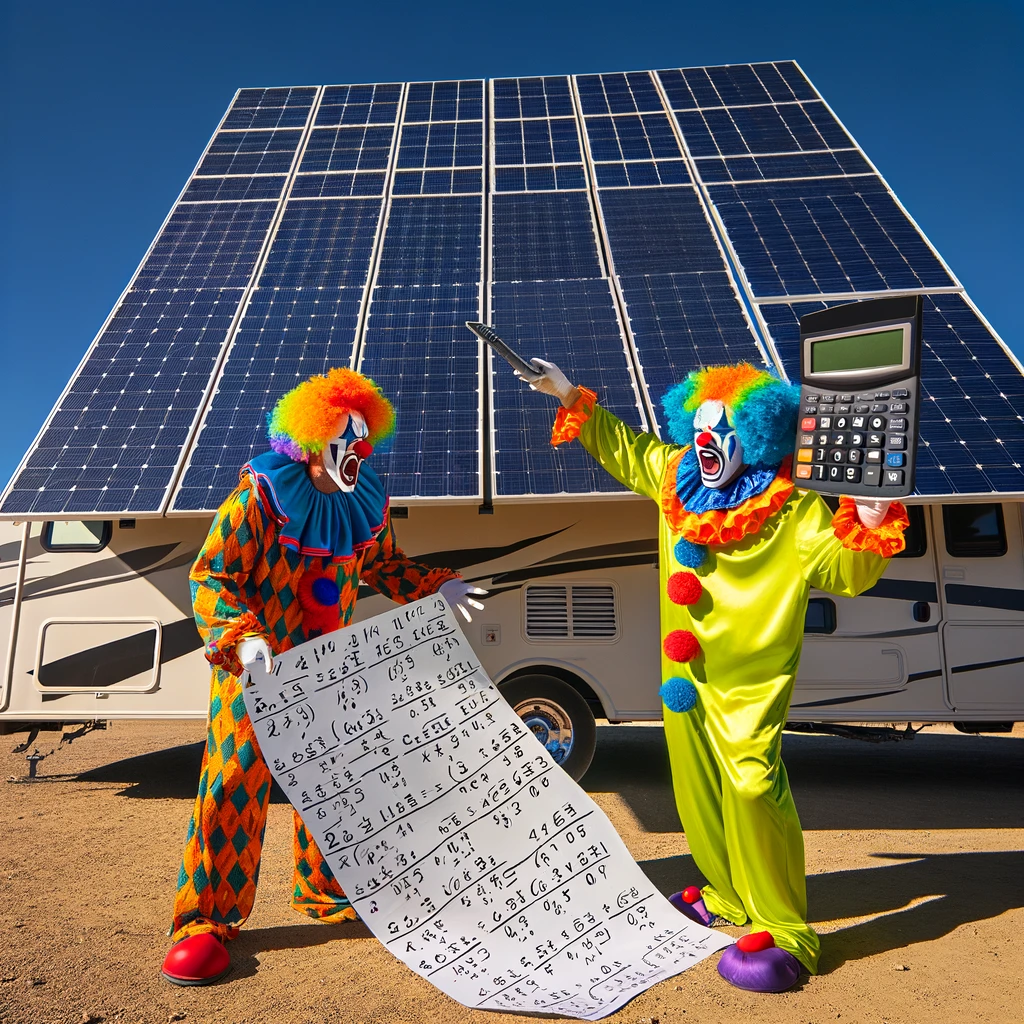Don’t Mount Flexible Panels Directly to Your Roof
It’s been about five years since I last wrote about Flexible Solar Panels and my views still haven’t changed, people (end users and RV dealerships) haven’t stopped mounting them on RV roofs, and the technology hasn’t really advanced. It’s still a bad idea to mount flexible panels directly to the roof of your RV, but RV dealers, manufacturers, and owners still do it, and our installation crew frequently gets tasked with removing them.
Below are some pictures of a recent job where the client wanted to replace their flexible panels due to poor performance. Removing the panels and cleaning up the adhesive took four hours of scrubbing. You can still see burn marks and cracks on the fiberglass roof.



Now, the customer has an array of conventional glass panels, with a 25-year warranty, that actually deliver the rated power, and instead of heating the RV, provide shade for it.
Reasons to Avoid Mounting Flexible Solar Panels to your Roof
INCREASED HEAT
Solar cells are black and designed to absorb solar energy. A lot of that energy is thermal, and cells get very hot. If you have these hot cells directly mounted on your roof, they will transfer heat to the RV, so much heat, that it will actually burn and damage your roof. There’s a reason people don’t paint the roofs of RVs black. Installing flexible solar panels directly on your roof is worse than painting your roof black. This is a stark contrast to the shade that conventional panels provide, with their air gap between the panel and the roof. There has also been at least one major recall with one flexible panel distributor due to the panels causing fires. Learn more here.
SHORT LIFESPAN
The warranties of most flexible panels are typically 2-3 years, whereas the warranties of conventional panels are 25 years. This is because the panels don’t last very long when exposed to the elements 24/7/365. The plastic encasing the cells degrades over time. It turns an opaque yellowish-brown and deforms to a cup shape over each cell. This cup captures dust and debris, affecting both appearance and panel output. We frequently test 2 to 3-year old factory-installed flexible panels that are performing at 20 – 50% of the wattage rating.
POOR PRODUCTION
The plastic in flexible panels has an index of refraction that is inferior to that of solar glass, and off-angle light isn’t transmitted as well, and neither is direct sunlight. That, coupled with the material being deformed, opaque, dirty, hot, and scratched, results in very poor performance.
NO MEASURABLE IMPROVEMENT IN MILEAGE
A lot of people buy flexible panels and mount them directly to their roofs because they think conventional panels will hurt the aerodynamics of their RV and result in worse gas mileage. The reality is that there is very little laminar (in straight lines) airflow across the roof of an RV. If there is an improvement in gas mileage, it’s not significant enough to be measurable.
NO REAL SAVINGS IN MOUNTING HARDWARE
Considering the cost of having to replace the panels about every three years, with the cost of cleaning up the roof where they were initially attached (about one hour per panel), it’s less expensive to go with conventional solar panels.
What are Flexible Solar Panels Good for?
Flexible panels are perfect for portable applications and boats. If you aren’t leaving them outside for months at a time, they hold up well enough to make reliable, lightweight, and compact portables. Because of their durability and thin profile, they are easy to stash in an RV. But please, don’t mount them directly to your roof.



